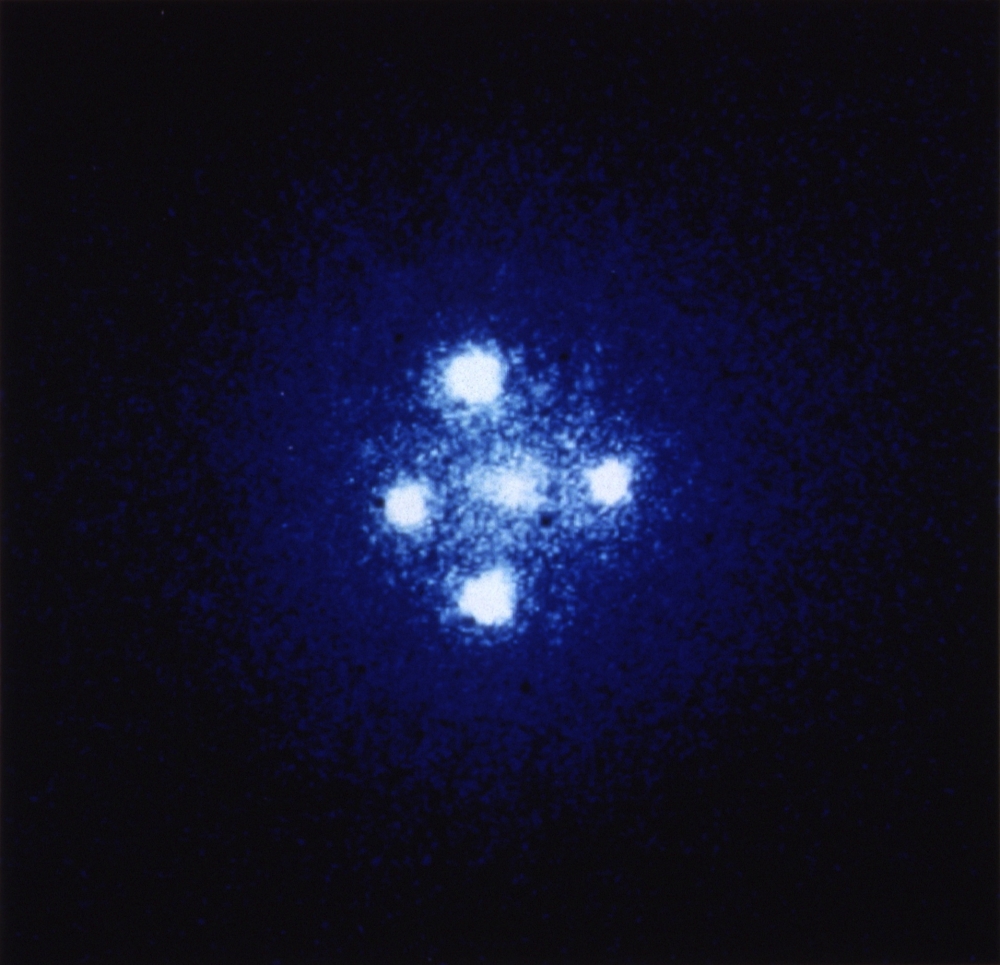Nugget Galaxies Cross in the Sky

The canonical Einstein Cross, the quadruply lensed quasar Q2237+030, is seen in this Hubble image. A new study has found two additional Einstein Crosses created by the lensing of compact galaxies. [NASA, ESA, and STScI]
By Susanna Kohler on 9 December 2020
Seeing quadruple? In a rare phenomenon, some distant objects can appear as four copies arranged in an “Einstein cross”. A new study has found two more of these unusual sights — with an unexpected twist.
Searching for Rare Crosses
Gravitational lensing — the bending of light by the gravity of massive astronomical objects — can do some pretty strange things. One of lensing’s more striking creations is the Einstein cross, a configuration of four images of a distant, compact source created by the gravitational pull of a foreground object (which is usually visible in the center of the four images).
The canonical example of this phenomenon is the Einstein Cross, a gravitationally lensed object called QSO 2237+0305, seen in the cover image above. In this case, as with the majority of known Einstein crosses, the background source is a distant quasar — the small and incredibly bright nucleus of an active galaxy. But other sources can be lensed into Einstein crosses as well, under the right circumstances.
See full text